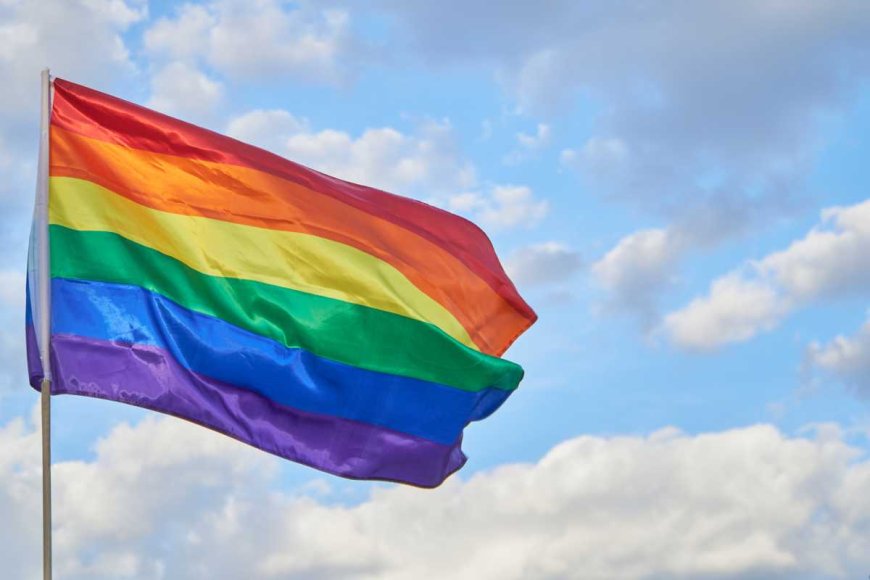Op-Ed | New York’s queer legacy built this city. It’s now at risk.
New York has always been a city of arrivals. A sanctuary for those seeking safety, dignity, and a future they couldn’t find at home. That same promise has drawn LGBTQIA+ people here for decades. From Midwestern towns, sterile suburbs, and countries where queerness is criminalized, they’ve come not just to survive, but to be… Read More

New York has always been a city of arrivals. A sanctuary for those seeking safety, dignity, and a future they couldn’t find at home. That same promise has drawn LGBTQIA+ people here for decades. From Midwestern towns, sterile suburbs, and countries where queerness is criminalized, they’ve come not just to survive, but to be seen, cared for, and free. To belong to a culture that built this city’s reputation on grit, creativity, and possibility.
That promise wasn’t just rhetoric. It was made real through policy. Federal support for Medicaid, the ACA marketplace, and mental health programs like the 988 crisis line laid the groundwork. Local and state leaders built on it with some of the strongest LGBTQIA+ protections in the country. And community institutions — from the Hetrick-Martin Institute to Callen-Lorde to Ali Forney Center — filled in the gaps, offering affirming care, housing, and healing for thousands.
But that delicate ecosystem is now buckling under the weight of new federal policy.
The recently passed One Big Beautiful Bill Act (OBBBA) threatens to dismantle the very systems that make survival possible for LGBTQIA+ New Yorkers. Framed as a budget package, OBBBA slashes Medicaid, strips ACA subsidies, bans gender-affirming care coverage through federal programs, and eliminates targeted mental health funding, including LGBTQ-specific support through the crisis line. These cuts don’t just hurt. They sever the fragile threads that keep young people tethered to hope.
New York is uniquely vulnerable. Over 1.5 million state residents are expected to lose health insurance, including many of the 569,000 LGBTQIA+ people in NYC, the largest queer population in the country. This city isn’t just a sanctuary in name. It’s a lifeline. A magnet for queer and trans youth seeking care and community.
Many rely on Medicaid or ACA subsidies for essentials like PrEP, hormones, puberty blockers, therapy, and HIV treatment. Under OBBBA, premiums will spike. Coverage will lapse. And care will disappear.
At Hetrick-Martin Institute, we’ve seen a 200% increase in mental health service requests since January. And we don’t even receive federal funding. The youth flooding our doors are already slipping through the cracks. Some are uninsured. Some have lost access to medication and don’t know why. Some are barely holding on. When this bill takes full effect, we won’t just be a safety net — we’ll be the only net left.
This is not theoretical. These aren’t policy shifts happening somewhere far away. This is your city. Your neighbors. A 17-year-old trans girl in the Bronx wondering if she’ll have to stop HRT. A Black queer 21-year-old in Crown Heights whose only access to therapy was through Medicaid. A recently out teen sleeping on the F train, waiting for a shelter bed that may never come.
We talk a lot about culture in this city — about what makes New York New York. The truth is, our cosmopolitan reputation has been held together by queer brilliance for decades. This is the city that gave the world ballroom, where vogueing became a global export. Where Greer Lankton sculpted trans bodies into reliquaries, David Wojnarowicz smeared rage and desire across gallery walls, and Cookie Mueller spun downtown chaos into sacred text. Where Marsha P. Johnson and Sylvia Rivera marched while Studio 54 and Paradise Garage became temples of transcendence. Where queer fashion, theater, and visual art collided in a cultural Big Bang.
That culture still pulses through basements and backrooms across the boroughs. But it’s no longer just underground — it’s the brand. Queer expression is now a cornerstone of New York’s economy and identity.
So what happens when our community can no longer afford to live here or even stay alive?
New York must treat OBBBA not as a distant federal fight, but as a local emergency and act accordingly.
We need to fully fund a state-level Essential Plan to replace lost federal support and cover all current enrollees, including immigrants. OBBBA will strip 730,000 New Yorkers from this program. At least 224,000 could be left with no affordable coverage at all.
We need a NYC Medicaid guarantee for gender-affirming care. The federal ban is a direct attack on trans New Yorkers. The city must step up with legislation to locally fund these services and expand access through clinics like Callen-Lorde and Apicha.
We need an emergency stabilization fund for frontline health providers. Community clinics and public hospitals are bracing for deep cuts that will shrink pediatrics, OB/GYN, and behavioral health services. A local fund could offset the blow and protect capacity.
And we must expand LGBTQIA+-focused crisis care and housing. With LGBTQ-specific 988 support set to end in 2025, New York must invest in culturally competent crisis teams and convert vacant city-owned buildings into affirming shelters, healing centers, and long-term housing.
These aren’t aspirational fixes. They’re survival strategies. If New York wants to remain a queer sanctuary, we must match that promise with policy. Because right now, lives are on the line.
Amy Harclerode is CEO of the Hetrick-Martin Institute. Marti G. Cummings is a NYC political activist and nightlife performer.

 Mark
Mark 





